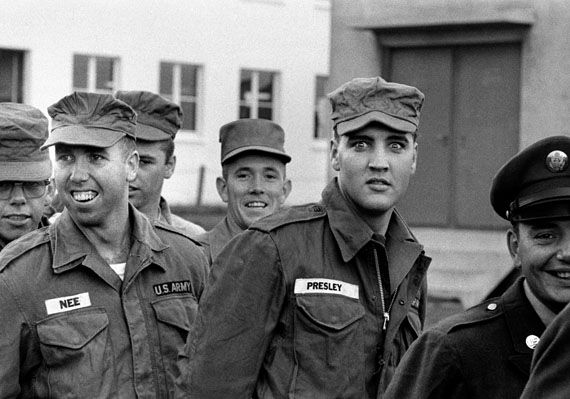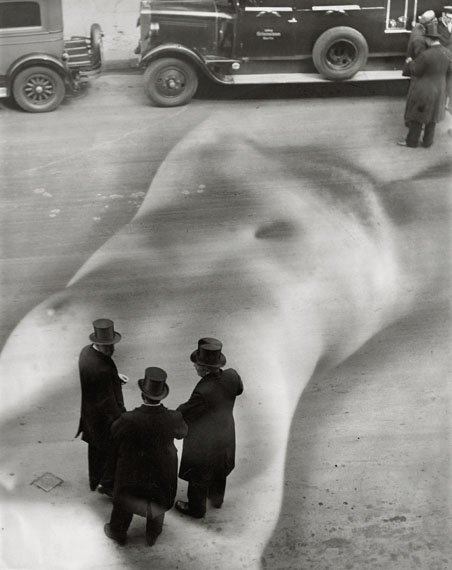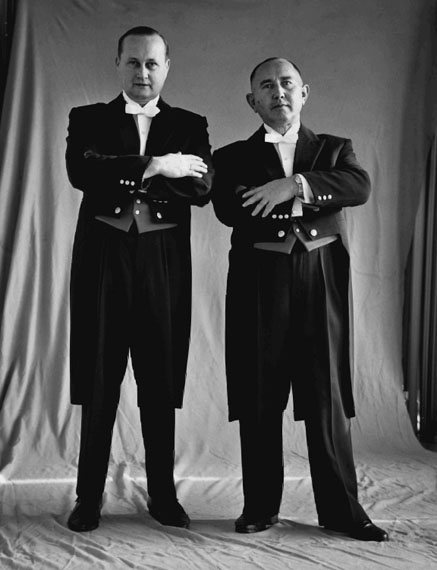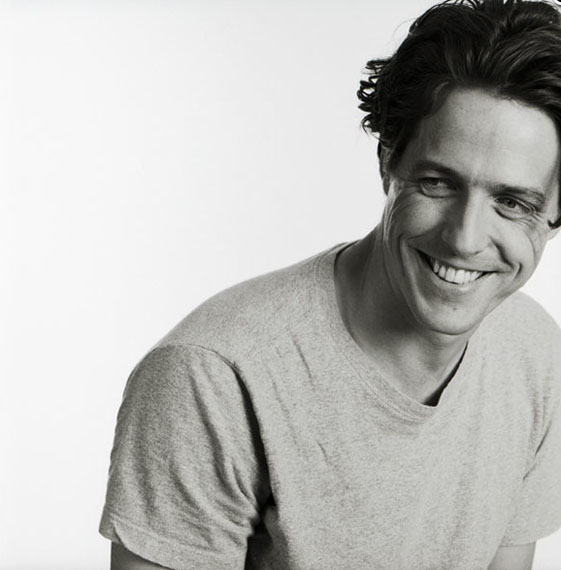
Courtesy Johanna Breede PHOTOKUNST, Berlin
MEN / MÄNNER
Sibylle Bergemann » Michael Birt » Heinz Hajek-Halke » Thomas Hoepker » Hannes Kilian » Birgit Kleber » Robert Lebeck » Herbert List » Stefan Moses » Ossip » Ulrike Ottinger » Beat Presser » Sheila Rock » Michael Ruetz » Max Scheler » Gundula Schulze Eldowy » Liselotte Strelow » Karin Székessy » Herbert Tobias » Kurt Wyss »
Exhibition: 18 Jan – 15 Mar 2014

Johanna Breede PHOTOKUNST
Fasanenstr. 69
10719 Berlin
+49 (0)30-88913590
photokunst@breede.de
www.johanna-breede.com
Tue-Fri 11-17, Sat 11-14

"MEN"
Exhibition: January 18th – March 15th, 2014
It’s a man’s world. James Brown even sang a song about it. Men were the ones who had invented cars, trains and ships. Men were the born creators. The “King of Soul” failed to mention however that it was also men who invented photography; men, who first created artificial images from light and chemicals. Technically enthusiastic homo faber. It was small wonder that such types initially found themselves mostly behind rather than in front of their new inventions; where they could tamper with lenses, shutters and apertures. The “sweet side” of the camera remained reserved for women – for the muse, the model, the femme fatale. At best, for purely representative purposes, they sometimes changed sides: for the emerging carte de visite, for official poses or sometimes to lend the serious regard of a “pater familias”.
Much has changed since then. Even men have now long dared to drop their traditional roles in front of the camera – they are allowed to appear broken, vulnerable or simply natural, as in a portrait from photographer Birgit Kleber, made three years ago, of her recently deceased New York colleague Saul Leiter. This photo does not portray a typical male, no “good fellow” full of hybris and heroism. Rather a grizzled, vulnerable boy looks out of this shot. He does not move his gaze directly towards the lens; but prefers to look slightly away – hand on chin with his face tilted downwards. Presumably, this is a totally honest picture. This is how Saul Leiter was; this master of American colour photography.
Men and myths, heros and realities, these are the reoccurring themes of the “Männer” photo exhibition, which can be seen in the Johanna Breede PHOTOKUNST gallery in Berlin between 18 January and 15 March. Works from 19 photographers – including Sibylle Bergemann, Thomas Höpker, Michael Ruetz, Max Scheler and Robert Lebeck – provide a glimpse behind the many masks of the supposedly stronger sex. The works are complemented by sculptures by the Dutch artist Ossip. Following the “Frauen” exhibition in early 2013, this exhibition further explores the photographic question of gender and role models in 20th and 21st century photography.
As with “Frauen“, at the beginning there is a work by Heinz Hajek-Halke: a male fantasy; a man’s imagining of woman . It is one of Hajek-Halke’s “combi-photographs” from 1932: “Defamation“. Three men in top hats and tails stand on a street, above which the photograph of the torso of a naked beauty is mounted. Desire and defence, phallic anxiety and phallic desire, everything appears to coalesce in this image; as in a psychological portrait of the male soul.
Stefan Moses also shows men in evening dress in this exhibition: these are pomaded ushers in the former House of Parliament in Bonn. The photo was taken in 1963. However, instead of eros and desire, Moses documents the deadlock of the pose; the shame and seriousness of the German post-war years. Not only was the land divided, but also male identities. This was not the new laxity. That came later from America: it was personified by Gary Cooper – by the “man from the West“. In 1953, photographer Hannes Kilian succeeded in attaining an impressive portrait. Stiffness meets dynamism in this image; American hero meets German defeated.
However even “the new man” experiences fractions and uncertainties. A early portrait from photographer Sheila Rock documents this quite impressively. It shows the young conductor Simon Rattle – at that time not yet the dishevelled genius, but rather a sensitive doubter. Men, as revealed by this work from the London music-photographer are much more than a cliché from an old pop song. They are as multi-layered and multi-facetted as the various styles and manuscripts of the photographers in this exhibition. (Text by Ralf Hanselle)�

"MÄNNER"
Ausstellung: 18. Januar bis 15. März 2014
Die Welt ist eine Männerwelt. Schon James Brown hat davon einst ein Lied gesungen. Männer hätten demnach Autos, Züge und Schiffe erfunden. Männer seien die geborenen Macher. Nicht erwähnt hatte der „King of Soul“ damals, dass es auch Männer waren, die die Fotografie erfanden; Männer, die aus Licht und Chemie apparative Bilder kreierten. Technikbegeisterte homo faber. Kein Wunder, dass sich solche Typen anfangs eher auf den Rückseiten, denn auf den Vorderseiten ihrer neuen Erfindung wiederfanden; dort, wo sie mit Linsen, Verschlüssen und Blenden hantieren konnten. Die „Zuckerseite“ der Kamera blieb eher für die Frau reserviert – für die Muse, das Model, die Femme fatale. Allenfalls für repräsentative Zwecke wechselte man zuweilen die Seiten: Für die bald aufkommenden Carte de visite, für Amtsfotos oder für manch ernsten Blick eines „pater familias“.
Vieles hat sich seither gewandelt. Auch Männer trauen sich längst vor der Kamera aus ihren tradierten Rollen zu fallen – dürfen gebrochen, verletzlich oder schlicht natürlich erscheinen. So wie auf einem Porträt der Fotografin Birgit Kleber, dass diese vor drei Jahren von ihrem jüngst verstorbenen New Yorker Kollegen Saul Leiter gemacht hat. Dieses Foto zeigt kein typisches Männer- und Mannsbild, keinen Pfundskerl mit Hybris und Heldenmut. Eher schon schaut einen von dieser Aufnahme ein ergrauter, verletzlicher Junge an. Einer, der seine Blicke nicht direkt in die Linse bewegt; sondern der lieber leicht wegschaut – die Hand am Kinn und das Gesicht leicht geneigt. Vermutlich ist dieses Bild vollkommen ehrlich. Genauso war wohl dieser Saul Leiter; dieser Meister der amerikanischen Farbfotografie.
Männer und Mythen, Heroen und Realitäten, es sind dies die immer wiederkehrenden Themen in der Fotoausstellung „Männer“, die vom 18. Januar bis zum 15. März in der Galerie Johanna Breede PHOTOKUNST in Berlin gezeigt wird. Arbeiten von neunzehn Fotografen – darunter von Sibylle Bergemann, Thomas Höpker, Herbert List, Robert Lebeck, Michael Ruetz und Max Scheler – werfen einen Blick hinter die vielen Masken des angeblich starken Geschlechts. Ergänzt werden die Fotografien von dreidimensionalen Arbeiten des holländischen Künstlers Ossip. Nach der Ausstellung „Frauen“ im Frühjahr 2013 setzt diese Schau die fotografische Frage nach Gender- und Rollenmustern in der Fotografie des 20. und 21 Jahrhunderts weiter fort.
Wie schon bei „Frauen“, so steht auch hier am Beginn eine Arbeit von Heinz Hajek-Halke: Eine Männerphantasie; eine Vorstellung des Mannes von der Frau. Es ist eine von Hajek-Halkes „Combi-Photographien“ aus dem Jahr 1932: „Die üble Nachrede“. Drei Männer in Frack und Zylinder stehen auf einer Straße, über die der Fotograf den Torso einer nackten Schönheit montiert hat. Begehren und Abwehr, phallische Angst und phallische Lust, alles scheint in diesem Bild zu verschmelzen; wie in einem Psychogramm von der männlichen Seele.
Auch Stefan Moses zeigt in dieser Ausstellung Männer im Frack: Es sind pomadierte Saaldiener im einstigen Bonner Bundeshaus. Aufgenommen wurde das Foto im Jahr 1963. Doch statt Eros und Lust dokumentiert Moses die Verklemmung der Pose; die Scham und den Ernst deutscher Nachkriegsjahre. Gespalten war damals wohl nicht nur das Land, gespalten waren auch maskuline Identitäten. Die neue Lässigkeit jedenfalls war das noch nicht. Die kam wohl eher aus Amerika: Sie wurde etwa verkörpert von Gary Cooper. - von dem „Mann aus dem Westen“. 1953 gelang dem Fotografen Hannes Kilian ein eindrucksvolles Porträt von ihm. Steifheit trifft auf diesem Bild auf Dynamik; ein amerikanischer Held trifft auf deutsche Verlierer.
Doch auch „der neue Mann“ kennt Brüche und Unsicherheiten. Eindrucksvoll dokumentiert dies etwa eine frühe Porträtaufnahme der Fotografin Sheila Rock. Sie zeigt den jungen Dirigenten Simon Rattle – damals noch nicht der zerzauste Genius, sondern eher noch ein sensibler Zweifler. Männer, so verrät diese Arbeit, sind eben weit mehr als ein Klischee aus einem alten Pop-Song. Sie sind so vielschichtig und facettenreich, wie es die verschiedenen Stile und Handschriften der Fotografen dieser Ausstellung sind. (Text: Ralf Hanselle)�

